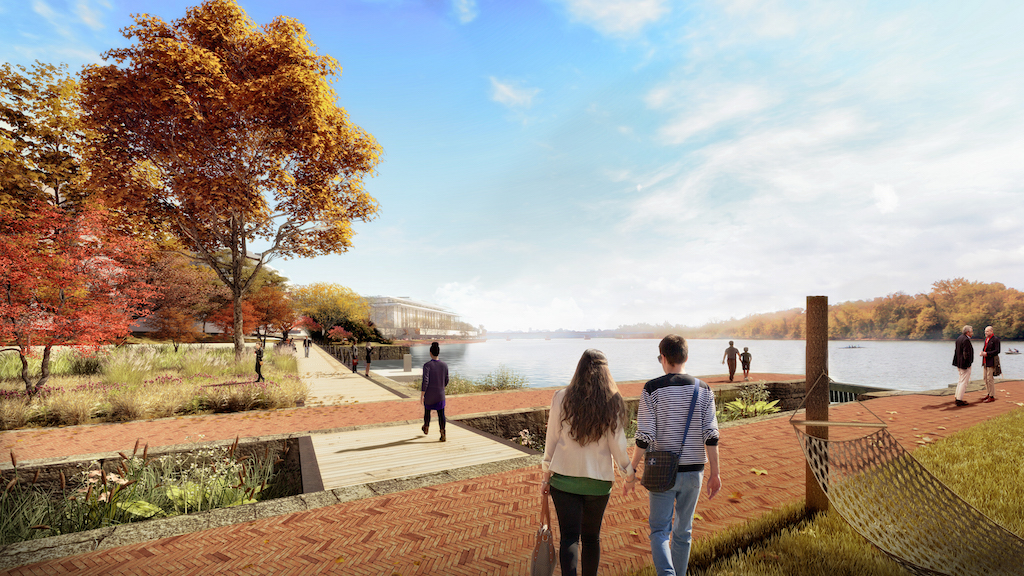When John Quincy Adams first broke ground on the Chesapeake and Ohio (better known as the C&O) Canal in 1828, the hope was that the 185-mile route would serve as a vital trade path between Maryland and DC. For a number of years after its completion, it was just that, a vessel to transport boats carrying cargo and products such as coal up and down the man-made waterway. For most of the past two centuries, it’s simply been a scenic park, stretching all the way to Cumberland, Maryland.
These days, it’s hard to believe boats ever traveled up and down the C&O Canal–the DC portion has been drained since last November, leaving only a dried up stretch of land for passers-by to look at. Now, a nonprofit is heading up a project to revitalize the section of the canal that passes through Georgetown, and it’s teamed up with James Corner Field Operations, the architecture firm that worked on New York’s High Line, to get the job done.
The drawings of the early-stage concepts of the revamped canal, which were presented to the community yesterday evening, include a number of ideas for beautifying the canal pathway and making it more pedestrian-friendly overall. Some of the more ambitious ideas include installing stadium-style seating behind the building where Dean & DeLuca is located, leveling the towpath to allow more bikers and pedestrians to travel along the canal, and bringing back a boat to transport visitors along the canal once it is re-filled with water.
The National Park Service has committed $6.4 million to the project. Georgetown Heritage, the nonprofit handling the canal redesign, will raise funds to cover the rest of the cost.


“First and foremost, we have to respect the history that’s here,” says Kevin Brandt, the National Park Service’s superintendent at the C&O Canal, who spoke at the meeting about the potential educational opportunities of the waterway. “You look at some of the walls up on 34th Street, and it’s made from stones and bricks that were a part of some other building in Washington, DC. Those are the kind of subtle clues we want to reveal to help tell the story of the canal.”
Some Georgetown residents, though, are more concerned with what the canal might look like in the future than how it’s looked in the past. At the meeting, attendees were asked to comment on the design concepts using sticky notes. Among some of the concerns they attached to designs: “There is no consideration for the residents who live about the water!” and “Too much focus on space for people — too many people — what then happens to serenity.”
The High Line connection was not lost on Georgetown resident Lydia Pelegrin, who brought a book about the famed New York walkway, which stretches along the west side of Manhattan and is now a major tourist attraction. Pelegrin pointed to photos of High Line-goers basking on chairs along the walkway, and expressed concern that the canal would face the same fate: “When you open up a space in that fashion, you’re gonna get a lot of people–tourists–a bazillion people. That’s my concern,” she said. Pelegrin, who lives in a building along the canal, expressed interest in preserving “the bucolic and historical nature of it,” but was unenthusiastic about attracting more tourists the the already-bustling neighborhood.
Alison Greenberg, the executive director of Georgetown Heritage, sees it differently: “We want it to be welcoming and inclusive, because now it’s not as welcoming and inclusive as it can be,” she says. She counters that, “We don’t want this to be another High Line.”




















